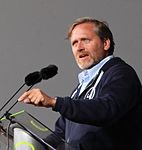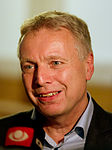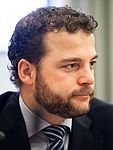Next Danish general election
|
|
|||||||||||||||||||||||||||||||||||||||||||||||||||||||||
|---|---|---|---|---|---|---|---|---|---|---|---|---|---|---|---|---|---|---|---|---|---|---|---|---|---|---|---|---|---|---|---|---|---|---|---|---|---|---|---|---|---|---|---|---|---|---|---|---|---|---|---|---|---|---|---|---|---|
|
|||||||||||||||||||||||||||||||||||||||||||||||||||||||||
|
All 179 seats to the Folketing 90 seats are needed for a majority |
|||||||||||||||||||||||||||||||||||||||||||||||||||||||||
|
|||||||||||||||||||||||||||||||||||||||||||||||||||||||||
|
|||||||||||||||||||||||||||||||||||||||||||||||||||||||||
General elections will be held in the Kingdom of Denmark after either the dissolution or expiry of the current Parliament, and must be held on or before 17 June 2019. All 179 members of the Folketing will be elected. 175 members will be elected in Denmark proper, two in the Faroe Islands and two in Greenland.
At the 2015 general election, the parties of the "Blue bloc" secured a very narrow majority in the Folketinget, 90 seats versus 89 for the parties of the centre-left "Red bloc". Ten days later, a minority government was formed by Venstre. The government was supported by the other parties in the "Blue bloc", Danish People's Party, the Liberal Alliance, and the Conservative People's Party. Lars Løkke Rasmussen, the leader of Venstre, became Prime Minister.
The 179 members of the Folketing are elected in Denmark (175), the Faroe Islands (2) and Greenland (2). The 175 seats in Denmark include 135 seats elected in ten multi-member constituencies by proportional representation, using a modified version of the Sainte-Laguë method and Hare quota, and 40 "top-up" seats, allocated to parties in order to address any imbalance in the distribution of the constituency seats.
...
Wikipedia









